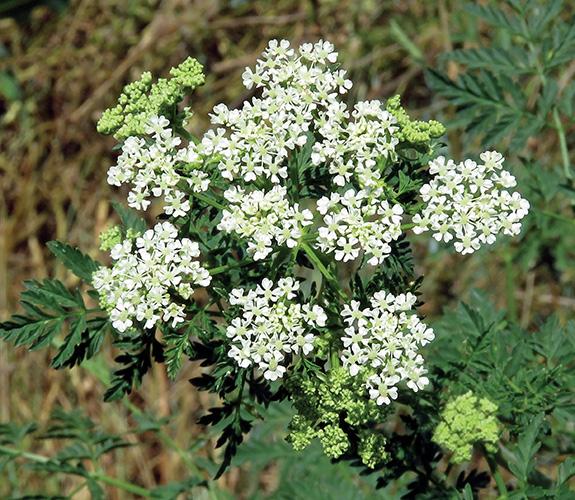Silent but Deadly
Avoiding poison hemlock.
A rich diversity of plants, native and invasive, thrive in southwest Montana’s varied landscapes. Some may be edible, making for a nice addition to a trailside salad, or they can land you in the ER if you’re hasty with identification. Here’s one to look out for.
Poison hemlock
Conium maculatum
Apiaccae (Parsley Family)
Flowers
June – August
Habitat
Moist soils, disturbed areas, along roads, ditches & fields
Purple-spotted stems are a good field mark, but avoid all parsley-like species unless you are an expert in distinguishing them.
Description
A native of Eurasia that is rapidly establishing itself across the region, all parts of this tall, stout plant are extremely poisonous. Poison hemlock is notorious for the execution of Socrates in ancient Greece—even small amounts can be deadly. The plant looks superficially similar to other members of the parsley family, such as wild carrot (Daucus carota), that one might nibble for a bit of parsley flavoring. However, conium, from the Greek konas, means to whirl, and vertigo is one of the symptoms of ingesting the plant. Maculata means “spotted”; purple-spotted stems are a good field mark, but avoid all parsley-like species unless you are an expert in distinguishing them. Look for poison hemlock in moist soils and disturbed areas, and along roads, ditches, and fields, from the plains to montane.
Information courtesy Flora of the Yellowstone by Whitney Tilt; all proceeds from the book benefit the Gallatin Valley Land Trust.













